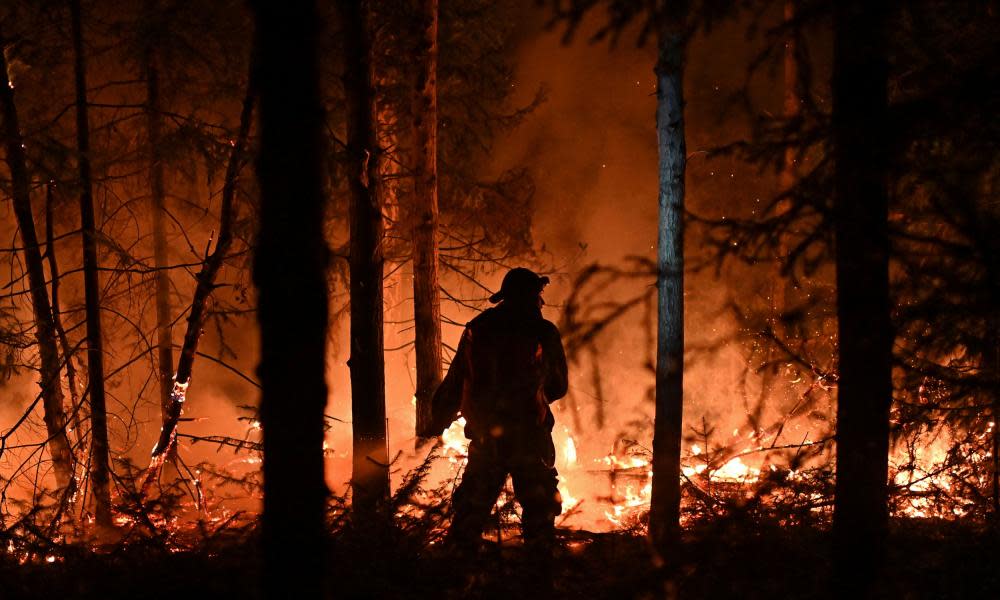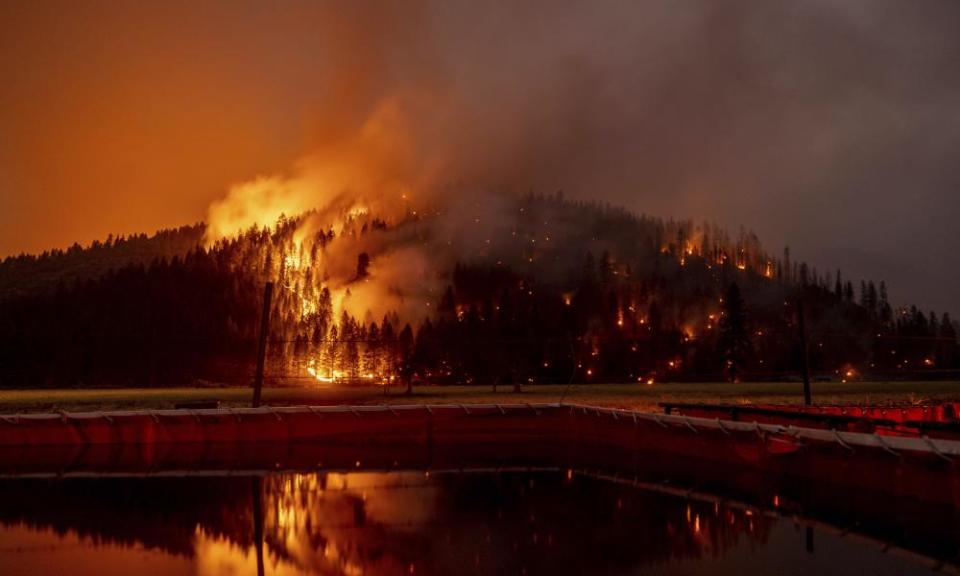Global wildfire carbon dioxide emissions at record high, data shows

August was another record month for global wildfire emissions, according to new satellite data that highlights how tinderbox conditions are widening across the world as a result of the climate crisis.
The Copernicus Atmosphere Monitoring Service of the EU found that burning forests released 1.3 gigatonnes of carbon dioxide last month, mostly in North America and Siberia. This was the highest since the organisation began measurements in 2003.
After a July record of 1258.8 megatonnes the previous month, scientists are concerned that areas with dense vegetation are becoming a source rather than a sink of greenhouse gases.
The increased flammability was evident across swathes of the northern hemisphere. Russia, which is home to the world’s biggest forest, was by far the worst affected as infernos in the taiga forests of Siberia pumped 970 megatonnes of carbon dioxide into the atmosphere between June and August – more than all the forests in the rest of the world put together.
“The number of fires, their persistence and intensity were remarkable,” Copernicus said.
Summer fires are not unusual in the Sakha Republic of north-eastern Siberia, but 2021 was exceptional. Emissions during this peak season were more than double the previous record. Blazes are burning longer than usual and with more ferocity.
In July, choking smoke gave the city of Yakutsk, which is in the midst of the Siberian fire region, the most polluted air in the world. This followed measurements of unusually high temperatures and lower than normal soil moisture.
Fires are also increasingly common in the Arctic Circle. This far northern region, which has warmed more than twice as fast as the rest of the planet, released 66m tonnes of CO2 this summer.
It was a similar story in North America, which has sweltered through deadly heat and unusually long dry spells.
In northern California, the Dixie Fire is now one of the biggest ever recorded in the state’s history, having turned almost a million acres to ash. Several Canadian provinces have also been scorched by unusually intense fires.

Europe has far less forest cover, but record high and prolonged heat has resulted in devastating fires in Turkey, which were four times more intense than anything previously registered. Greece, Italy, Spain, Portugal, Albania, North Macedonia, Algeria, and Tunisia have also battled with huge blazes that sent smoke plumes billowing across the Mediterranean.
Mark Parrington, senior scientist at Copernicus said this year was not a one-off but a sign of a worsening trend caused by human-driven climate change. “It is concerning that drier and hotter regional conditions, brought about by global warming, increase the flammability and fire risk of vegetation. This has led to very intense and fast-developing fires. While the local weather conditions play a role in the actual fire behaviour, climate change is helping provide the ideal environments for wildfires.”

 Yahoo Movies
Yahoo Movies 
